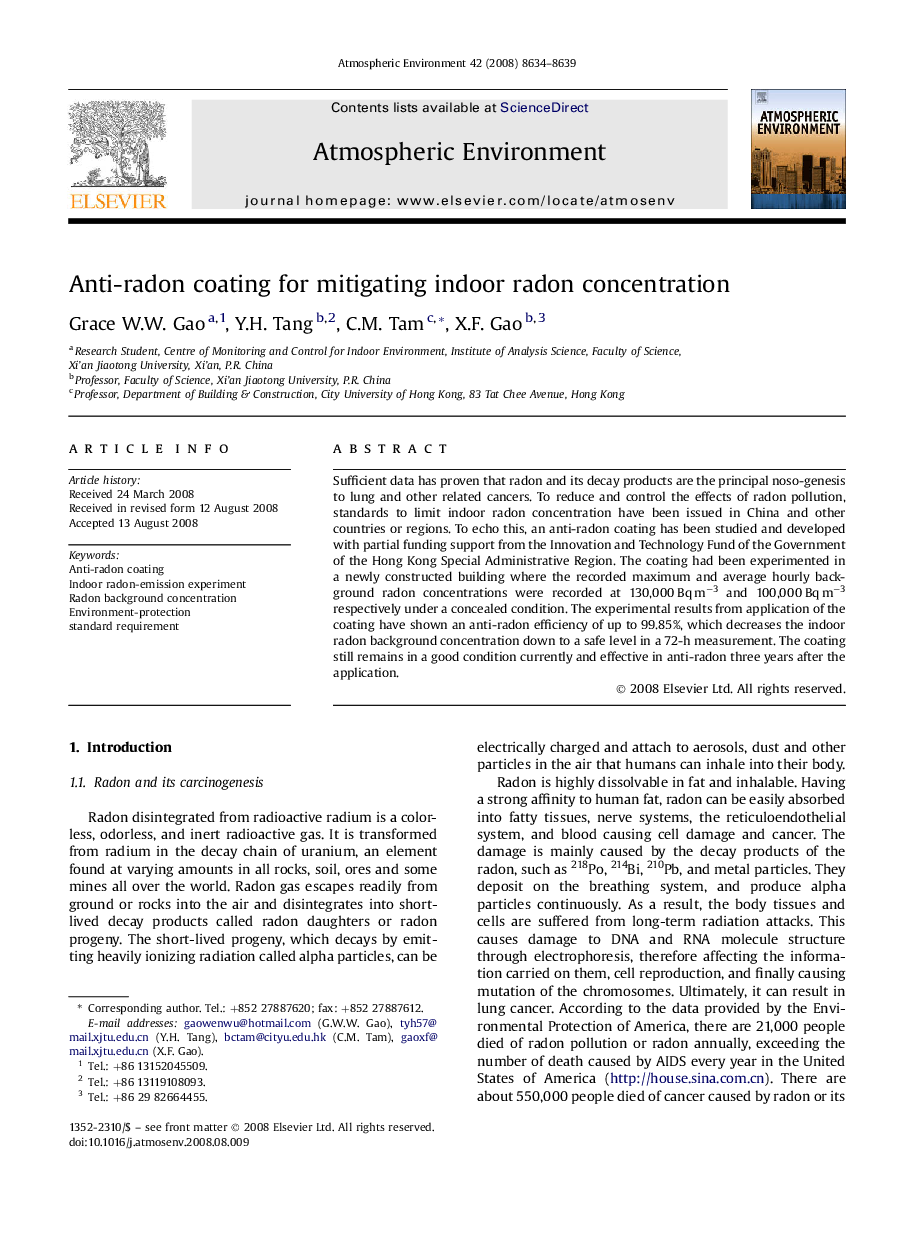| Article ID | Journal | Published Year | Pages | File Type |
|---|---|---|---|---|
| 4442074 | Atmospheric Environment | 2008 | 6 Pages |
Sufficient data has proven that radon and its decay products are the principal noso-genesis to lung and other related cancers. To reduce and control the effects of radon pollution, standards to limit indoor radon concentration have been issued in China and other countries or regions. To echo this, an anti-radon coating has been studied and developed with partial funding support from the Innovation and Technology Fund of the Government of the Hong Kong Special Administrative Region. The coating had been experimented in a newly constructed building where the recorded maximum and average hourly background radon concentrations were recorded at 130,000 Bq m−3 and 100,000 Bq m−3 respectively under a concealed condition. The experimental results from application of the coating have shown an anti-radon efficiency of up to 99.85%, which decreases the indoor radon background concentration down to a safe level in a 72-h measurement. The coating still remains in a good condition currently and effective in anti-radon three years after the application.
